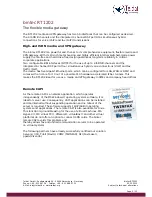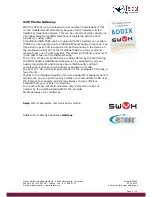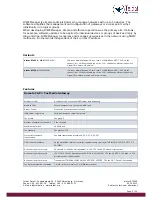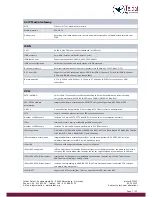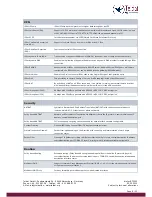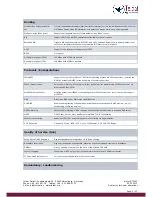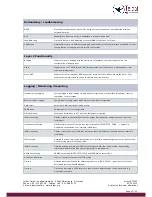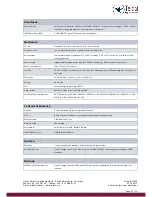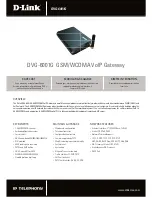
bintec RT1202
03.12.2013
Subject to technical alterations
Page 9 / 13
Teldat GmbH - Suedwestpark 94 - 90449 Nuremberg - Germany
Phone: +49 - 911 9673-0 - Telefax: +49 - 911 688 07 25
E-Mail: info@teldat.de - www.teldat.org
Routing
Multicast Routing Protocol PIM
SM
Protocol Independent Multicast (PIM) distributes information via a central Rendezvous Point Server.
PIM Modus Sparse Mode (SM) forwards only packets to groups which have been requested
Multicast inside IPSec tunnel
Enables the transmission of multicast packets via an IPSec tunnel
RIP
Support of RIPv1 and RIPv2, separated configurable for each interface
Extended RIP
Triggerd RIP updates according RFC 2091 and 2453, Poisened Rerverse for a better distribution of
the routes; furthermore the possibility to define RIP filters for each interface.
OSPF
Support of the dynamic routing protocol OSPF
BGP4
On request
Routing throughput (1518)
199 Mbps with 1518 Byte packets
Routing throughput (256)
198 Mbps with 256 Byte packets
Protocols / Encapsulations
PPP/MLPPP
Support of Point to Point Protocol (PPP) for establishing of standard PPP connections, inclusive the
Multilink extension MLPPP for the bundeling of several connections
PPPoE (Server/Client)
Point-to-Point Protocol over Ethernet (Client and Server) for establisching of PPP connections via
Ethernet/DSL (RFC 2516)
MLPPPoE (Server/Client)
Multilink extension MLPPPoE for bundeling several PPPoE connections (only if both sides support
MLPPPoE)
DNS
DNS client, DNS server, DNS relay and DNS proxy
DYN DNS
Enables the registering of dynamic assigned IP addresses at adynamic DNS provider, e.g. for
establishing of VPN connections
DNS Forwarding
Enables the forwarding of DNS requests of free configurable domains to assigned DNS server.
DHCP
DHCP Client, Server, Proxy and Relay for siplified TCP/IP configuration
Packet size controling
Adaption of PMTU or automatic packet size controling via fragmentation
X.25 Enhanced
Optional: X.25 over ISDN, XOT, X.25 to TCP Gateway, X.25 PAD, TP0 Bridge
Quality of Service (QoS)
Policy based Traffic Shapping
Dynamic bandwidth management via IP traffic shaping
Bandwidth reservation
Dynamic reservation of bandwidth, allocation of guaranteed and maximum bandwidths
DiffServ
Priority Queuing of packets on the basis of the DiffServ/TOS field
Layer2/3 tagging
Conversion of 802.1p layer 2 priorisation information to layer 3 diffserv attributes
TCP Download Rate Control
For reservation of bandwidth for VoIP connections
Redundancy / Loadbalancing


